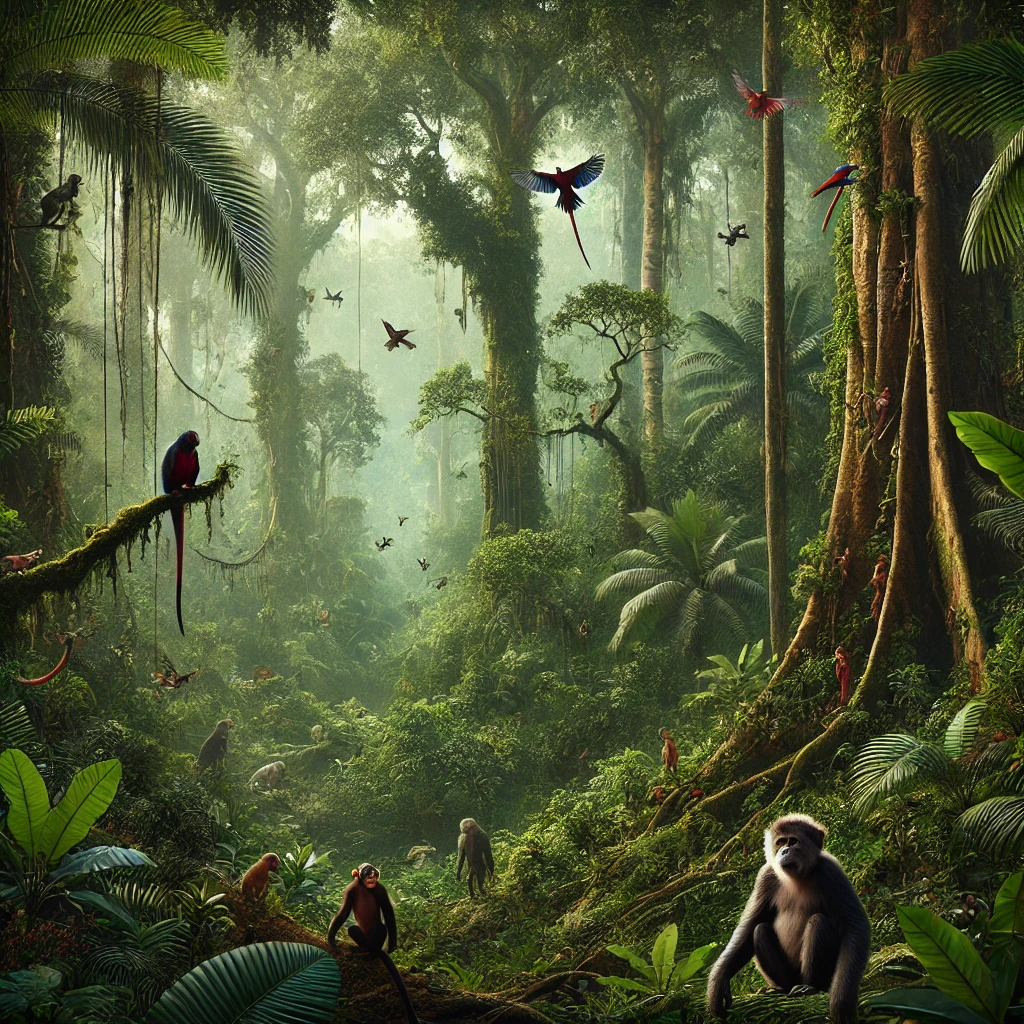The Amazon Rainforest, often referred to as the “lungs of the Earth,” is the largest tropical rainforest in the world. Covering an area of approximately 5.5 million square kilometers, it spans across nine countries in South America, with the majority of it located in Brazil. This immense forest plays a crucial role in maintaining global climate patterns and is home to an astonishing diversity of flora and fauna. However, the Amazon is much more than just a vast expanse of trees; it is a complex and vibrant ecosystem with many secrets waiting to be uncovered.
Biodiversity: A Living Library
The Amazon Rainforest is one of the most biodiverse places on the planet. It hosts an estimated 390 billion individual trees divided into 16,000 species. Beyond its trees, the forest is teeming with wildlife, from jaguars and sloths to countless insects and birds. This biodiversity is crucial for the stability of global ecosystems.
The forest’s dense canopy provides a habitat for many species that have yet to be discovered. Scientists believe that only a fraction of the species living in the Amazon have been identified, making it a living library of genetic resources. This biodiversity is not just important for environmental reasons; many species in the Amazon have medicinal properties that have yet to be explored.
Indigenous Cultures: Guardians of the Forest
The Amazon is home to over 400 indigenous tribes, many of which have lived in harmony with the forest for thousands of years. These communities possess a deep understanding of the rainforest’s ecology and are crucial to its conservation. Their knowledge of medicinal plants, sustainable agriculture, and forest management is invaluable.
Indigenous peoples have developed complex societies with rich cultural traditions, languages, and belief systems that are deeply intertwined with the rainforest. They view the forest not just as a resource, but as a sacred place that must be protected. The fight for their land rights is not only a struggle for justice but also a crucial element in the global effort to preserve the Amazon.
The Amazon River: Lifeblood of the Rainforest
The Amazon River, the second longest river in the world, flows through the heart of the rainforest, providing life-giving water to the entire ecosystem. Stretching over 7,000 kilometers, the river and its tributaries form the largest river system on Earth, discharging more water than the next seven largest rivers combined.
This vast network of waterways is essential for transporting nutrients across the forest, supporting a diverse array of aquatic and terrestrial life. The river is also a critical source of food and transportation for the millions of people living within the Amazon basin. However, it faces numerous threats from pollution, dam construction, and climate change, which could have devastating effects on the entire rainforest ecosystem.
Climate Regulation: The Amazon’s Global Impact
The Amazon Rainforest plays a vital role in regulating the Earth’s climate. It acts as a massive carbon sink, absorbing approximately 2 billion tons of carbon dioxide annually. This helps mitigate the effects of global warming by reducing the amount of greenhouse gases in the atmosphere.
Moreover, the Amazon generates about 20% of the world’s oxygen and influences weather patterns both locally and globally. The forest’s dense canopy produces vast amounts of water vapor, contributing to the formation of clouds and precipitation. This “flying river” phenomenon helps maintain rainfall levels not only in South America but also in regions as far away as North America and Europe.
Threats to the Amazon: Deforestation and Beyond
Despite its ecological importance, the Amazon Rainforest is under severe threat. Deforestation, driven by logging, agriculture, mining, and infrastructure development, is the most significant challenge. Each year, vast areas of the forest are cleared, leading to habitat loss, reduced biodiversity, and increased carbon emissions.
The expansion of cattle ranching and soybean farming is particularly destructive, as large tracts of land are converted into pasture and farmland. Additionally, illegal logging and mining operations continue to encroach upon protected areas, further exacerbating the problem. Climate change also poses a significant threat, as rising temperatures and altered rainfall patterns could lead to more frequent and severe droughts, increasing the risk of forest fires.
Conservation Efforts: A Ray of Hope
Despite these challenges, there are numerous conservation efforts underway to protect the Amazon. Governments, non-governmental organizations, and indigenous communities are working together to implement sustainable practices and enforce environmental regulations.
Protected areas and indigenous territories now cover a significant portion of the Amazon, providing a refuge for wildlife and a barrier against deforestation. Innovative conservation strategies, such as REDD+ (Reducing Emissions from Deforestation and Forest Degradation), offer financial incentives for preserving forests. These initiatives aim to balance the needs of local communities with the goal of long-term forest conservation.
The Future of the Amazon: A Call to Action
The future of the Amazon Rainforest depends on our collective efforts to address the threats it faces. International cooperation, robust environmental policies, and sustainable development practices are essential to ensure the forest’s survival.
Consumers also have a role to play by supporting products that are sustainably sourced and advocating for policies that protect the environment. Raising awareness about the importance of the Amazon and the challenges it faces can help mobilize global action.
Conclusion
The Amazon Rainforest is a treasure trove of biodiversity, cultural heritage, and ecological significance. Its preservation is not only crucial for the millions of species and people who call it home but also for the health of our planet. By understanding and valuing the secrets of the Amazon, we can work together to protect this vital ecosystem for future generations.
